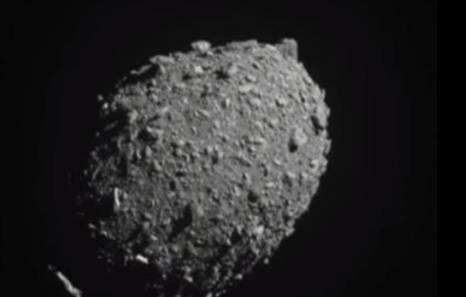NASA’s DART (Double Asteroid Redirection Test) mission, which involved crashing a spacecraft into the asteroid Dimorphos in 2022, might lead to the first human-made meteor shower, potentially named the Dimorphids. The mission aimed to assess the effectiveness of asteroid deflection technology to protect Earth by altering the course of a celestial object through a direct kinetic impact.
Fallout from NASA’s asteroid-smashing DART mission could hit Earth — potentially triggering 1st human-caused meteor shower https://t.co/trI7dJwKqy
— My Opinion Podcast (@__my__opinion) August 31, 2024
Dimorphos and its larger parent asteroid, Didymos, do not pose any danger to Earth. However, Dimorphos’ size made it an ideal target for NASA’s deflection experiment. The DART spacecraft’s collision successfully altered the asteroid’s orbit by about 32 to 33 minutes, demonstrating that kinetic impact could change the motion of an asteroid. This impact created over 2 million pounds (nearly 1 million kilograms) of debris, raising questions about where these materials might travel in space.
Recent research suggests that fragments from Dimorphos could reach Earth and Mars within the next few decades, with some pieces potentially arriving at Mars in as little as seven years and Earth within ten years. The study, which is set to be published in the Planetary Science Journal, used data from LICIACube—a small satellite that captured images of the collision and the resulting debris cloud—to simulate the trajectories of millions of particles across the solar system.
The debris ranges from tiny particles to fragments as large as smartphones. According to the researchers, none of this debris is expected to pose a threat to Earth, as it would burn up upon entering the atmosphere due to friction at high speeds. While a meteor shower on Earth remains unlikely, there is a possibility of small, faint meteors originating from Dimorphos’ debris.
The data collected from the DART mission and LICIACube will be essential for future observations and studies. The European Space Agency’s upcoming Hera mission, set to launch in October 2024 and reach the asteroid system by late 2026, will provide further investigation of the collision’s aftermath. Hera, along with two CubeSats, will study the composition and mass of Dimorphos and help determine the precise movements and effects of the debris.
Get your space suits ready and buckle up, folks! NASA’s DART mission has all the makings of a fantastic, human-made meteor shower. pic.twitter.com/1jJgBD4hIJ
— Cognified Journal (@TLDR_Bytes) August 31, 2024
Hera’s mission will allow scientists to understand better the impact’s effects on Dimorphos, such as whether a visible crater was formed or if the asteroid was significantly reshaped. The insights gained from these observations will enhance our understanding of asteroid dynamics and the potential for using similar deflection techniques to protect Earth in the future.
The possibility of Dimorphos’ debris reaching other celestial bodies or creating meteor showers adds to the broader implications of space missions like DART. By studying these debris movements, researchers hope to refine our understanding of how such impacts could be used to defend our planet from future threats.
Key Points:
i. NASA’s DART mission may lead to the first human-made meteor shower, named the “Dimorphids.”
ii. The mission’s impact altered Dimorphos’ orbit and released over 2 million pounds of debris.
iii. Some debris could reach Earth and Mars in the next decade, possibly creating a faint meteor shower.
iv. The debris poses no threat to Earth as it is expected to burn up upon atmospheric entry.
v. Further studies, including the upcoming Hera mission, will explore the effects of the DART impact on Dimorphos and Didymos.
Fallon Jacobson – Reprinted with permission of Whatfinger News


